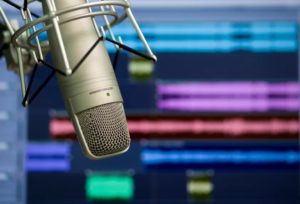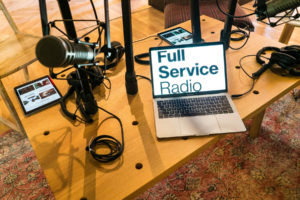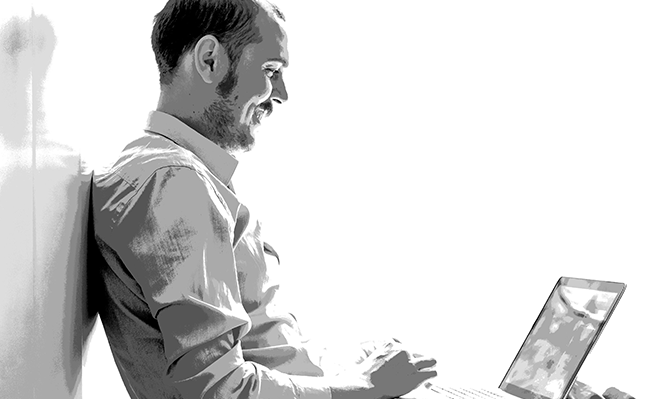Creating great podcasts not only involves consistent production methods and quality content, but also having the right podcast equipment.
Here are a few options for podcasting equipment, and a brief overview of how you can go about creating your own recordings using free Audacity software.
A rundown of podcast equipment
You’ll need a few pieces of basic hardware to get you started.
Microphone:
There are essentially two types of mics:
- USB mics, which plug into your computer and convert analogue signals into digital.
- Analogue mics, which cost a bit more and produce a higher quality of sound. With these types, you will need a digital recording device or an audio interface if you are recording directly onto your computer.
You may be able to get USB mics for a few dollars from electrical stores but if you want good quality, paying a bit extra for a higher quality USB mic or an analogue model might be a good idea.
Pop filter or shield:
A pop filter is a device that is placed in front of the mic to filter out the popping noises that can come with speech. It may also protect the mic from mould and moisture damage due to saliva. A pop filter consists of a piece of material stretched over a frame.
 Digital recording device:
Digital recording device:
If you use an analogue microphone you will probably need one of these. Some experts recommend using one anyway as they are more dependable than computers. These range from portable models that come with basic features such as sound adjustment right up to pricier models with very advanced features.
Computer:
You will need a PC with at least Windows XP or a Mac with OS X 9 or later, a sound card and good internet access. It’s also important to make sure your computer will support the software and hardware that you will be using.
Digital Audio Workstation Software:
As well as podcast equipment hardware, you’ll need software to help you create recordings. There are a number of free or paid options here, including:
- Audacity: a free program that supports Windows, OS X and Linux. It comes with a number of tools, effects and recording features as well as an MP3 export feature, and is considered by many to be a very good option for beginners.
- LAME: free MP3 encoder software.
- Apple GarageBand for Mac: comes with editing tools, sound effects and capacity for multiple channel recording.
- Pro-tools: this one is more advanced and costs several hundred dollars to purchase, although monthly subscription plans are also available.
Hosting:
Once you have your podcasts ready to go, you have to think about hosting them. Options include:
- Sound Cloud: free hosting platform that allows you to share your tracks with audiences and that also comes with analytics.
- Podbean: popular platform that comes with free and paid options.
- Libsyn: an older and more advanced platform with plans ranging from $5 to $75 per month, depending on the level of features you want.
A quick guide to podcasting with Audacity
Audacity is a free user-friendly program that can help you start podcasting relatively easily. The first step is to install Audacity and LAME MP3 encoder software onto your computer. Then:
- Connect your mic and record yourself using the record and stop buttons then hit playback to hear how it sounds. If it is too loud or soft, record again adjusting the volume with the volume slider.
- Once you are happy with the recording, save it as an MP3 file under ‘Export Audio’.
- Test out your MP3 on a player or computer.
- Add intro music if you want by separately recording a sound track, and using the Selection Tool and Trim buttons to cut out the sections of the music you want. This can then be pasted onto your recording. You might also want to use the Fade Out button (under Effects) for gradually fading out the music.
The level of professionalism you want in your podcasts depends on your budget and how much you are willing to invest. Certainly there are some relatively inexpensive ways to test out the waters before diving in deeper. And the latest data shows podcasts are becoming increasingly popular.
And remember – whether you’re dipping a toe in or deciding to go all out with a pro podcast set-up, the most important thing is to create podcasts that your listeners will find relevant and interesting. Aim to produce consistent quality content that will engage listeners and help build your audience.




